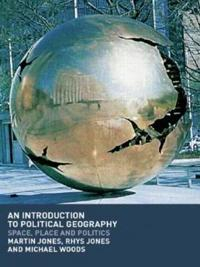

An Introduction to Political Geography: Textbook
- Utgiven: 2004
- ISBN: 9780415250771
- Sidor: 208 st
- Förlag: Routledge
- Format: Häftad
- Språk: Engelska
Om boken
An Introduction to Political Geography provides a broad-based introduction to contemporary political geography. It examines the inter-relationship between politics and geography on a number of levels and in a number of different contexts. It explores how power interacts with space; how place influences political identities; and how policy creates and remoulds territory. By pushing back the boundaries of what we conventionally understand as constituting political geography, the book emphasizes the interactions between power, politics and policy, space, place and territory in different geographical contexts. Questions of the interaction between politics and geography permeate much of contemporary life. An Introduction to Political Geography outlines the full breadth of contemporary political geography, covering a rich and diverse range of topics, many of which will be familiar from readers' everyday experiences.In doing so it addresses not only traditional concerns such as state formation, geopolitics, electoral geography and nationalism, but also newer themes at the cutting-edge of political geography research, including the geographies of regulation and governance, policy formulation and delivery, the politics of place consumption, landscapes of power, identity politics and geographies of resistance. An Introduction to Political Geography is both an essential text for political geographers and also a valuable resource for students of related fields with an interest in politics and geography. The accessible text combines discussions of cutting-edge conceptual debates with international case-studies, numerous illustrations and explanatory boxes.
Åtkomstkoder och digitalt tilläggsmaterial garanteras inte med begagnade böcker
Mer om An Introduction to Political Geography: Textbook (2004)
I maj 2004 släpptes boken An Introduction to Political Geography: Textbook skriven av Martin Jones, Rhys Jones, Michael Woods. Den är skriven på engelska och består av 208 sidor. Förlaget bakom boken är Routledge.
Köp boken An Introduction to Political Geography: Textbook på Studentapan och spara pengar.
Referera till An Introduction to Political Geography: Textbook
Harvard
Jones, M., Jones, R. & Woods, M. (2004). An Introduction to Political Geography: Textbook. Routledge.
Oxford
Jones, Martin, Jones, Rhys & Woods, Michael, An Introduction to Political Geography: Textbook (Routledge, 2004).
APA
Jones, M., Jones, R., & Woods, M. (2004). An Introduction to Political Geography: Textbook. Routledge.
Vancouver
Jones M, Jones R, Woods M. An Introduction to Political Geography: Textbook. Routledge; 2004.


















